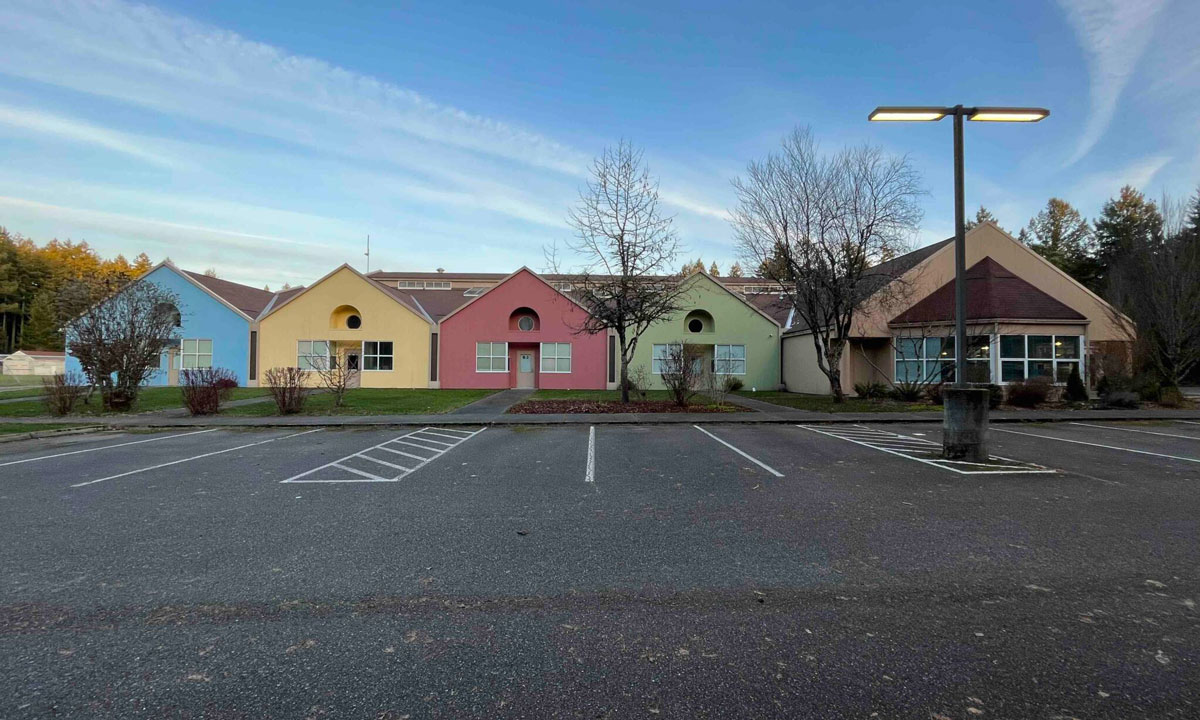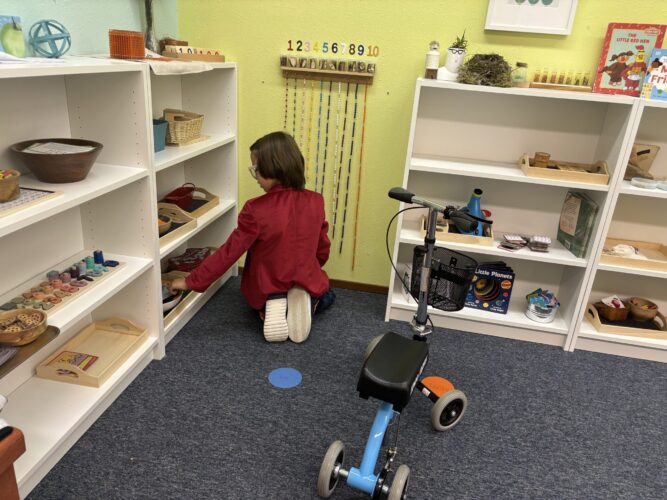As Enrollment Drops, School Closures Loom for More Washington Communities
Experts say shuttering a school can make financial sense. But it can be hard for students and their families.

Get stories like this delivered straight to your inbox. Sign up for The 74 Newsletter
After 8-year-old Rowan had his third surgery last year, half of his class at Olympia’s Boston Harbor Elementary School came by to drop off cards and offer support. His parents say the school’s tight-knit community has been a “warm hug” to Rowan as he deals with fibular hemimelia, a congenital condition affecting his mobility.
So when Olympia School District announced in the fall of last year that Boston Harbor might be closing, Rowan and his family felt blindsided. (The Standard is only using Rowan’s first name due to his parents’ concerns about privacy.)
“I like my friends at my school,” Rowan said. “If they’re at different schools, then I can’t play with my friends.”
Rowan’s parents are part of OSD For All, a group of parents and community members who are trying to prevent Boston Harbor Elementary’s closure.
Across the state, similar efforts are taking place to keep schools from closing as student enrollment drops and, as a result, district budgets shrink. In Washington, state funding is tied directly to how many students are enrolled in public schools.
The tradeoffs involved are complex. State officials don’t seem eager to prop up schools with declining enrollment. And education policy experts believe it’s often better to close one school than to spread resources thin across too many.
But to families like Rowan’s, the long-term cost of closing a school is about more than just money and, in their view, just isn’t worth it.
“There are going to be so many kids who get lost in the shuffle,” said Angela Vigil, Rowan’s mom.
‘They don’t live there’
Vigil said her family moved out of Seattle to send Rowan to Boston Harbor Elementary.
Erin Mann, a preschool teacher whose students often go on to Boston Harbor, said generations within families have gone to Boston Harbor Elementary and that many have a sense of pride connected to the school.
The next closest school within the district is Roosevelt Elementary School, about a 12-minute drive from Boston Harbor. But Mann said Roosevelt is in a different community and that means that students and parents shifted there won’t be as invested in the school.
“They don’t live there. They don’t want their kids to be going there,” Mann said.

“There’s a lot of connection with neighborhood schools in this country. There’s a deep history with that,” Honig said. “It’s a center of community for a lot of people.”
School closures usually happen in lower-income, more diverse areas, making the relatively affluent Boston Harbor an outlier, said Marguerite Roza, who heads Georgetown University’s Edunomics Lab, a research center focused on education finance.
Nationally, Black and Hispanic students have largely taken the brunt of recent school closures. In Washington, Bellevue presented the possibility of closing three elementary schools last year, eventually consolidating two of them. The seven schools considered for closure were some of the most diverse in the district, parents told Crosscut.
State funding outlook
Washington’s K-12 enrollment numbers dropped by 47,885 students since the 2019-2020 school year, putting the state’s total number of students at 1,098,997 during this school year. During COVID-19, parents pulled their kids out of public schools — and the public school system simply lost track of many students. However, drops in enrollment predate the pandemic due to declining birth rates and other factors.
As federal COVID-19 rescue funds run out and state funding declines along with enrollment, many districts are heading for a financial cliff.
K-12 education is the largest category of state spending in Washington’s budget. But Larry Delaney, who heads the state’s public schools teacher union, the Washington Education Association, recently called the percentage of the budget devoted to education “inadequate” and said more funding is needed to prevent school closures, as well as staff reductions and other cuts.
Seattle Public Schools recently decided not to close a school in 2024 after an outcry from families, choosing instead to ask the Legislature for additional money. Olympia School District will also advocate for more state funding, said Superintendent Patrick Murphy in an email to the Standard.
Gov. Jay Inslee said that while he’s concerned about declining enrollment, it shouldn’t be a surprise that the share of the budget spent on education will fall in tandem with the sinking student headcount.
“I can’t solve the problem of people having less children or they’re not going to public school,” Inslee said in a recent interview on TVW’s Inside Olympia.
Chris Reykdal, who heads the state’s Office of Superintendent of Public Instruction, said that while he encourages the Legislature to consider how declining enrollment is hitting school budgets, closures may be necessary as district finances tighten.
Nobody wants to see a school close and education is Washington’s biggest priority, said Rep. Lillian Ortiz-Self, D-Mukilteo, who sits on the House Education Committee. Still, asking for more funds to keep open schools with fewer kids is a “difficult ask.”
“Since the pandemic, we have done everything we can to supplement school district budgets so that they can continue to operate and give them time to rebuild their student population. Each year that goes by, the harder that gets to do,” Ortiz-Self said. “We have to meet so many other needs. How much time do we give school districts to rebuild?”
‘Tough decisions’
Vigil, the Boston Harbor parent, believes Olympia’s district hasn’t thought about how closing a school could deepen enrollment declines.
“I think there will be a lot of parents who are so angry with the district that they will leave,” Vigil said.
But Roza, at Georgetown, pointed to the competing factors in play.
“These are tough decisions,” she said. “But you know what also doesn’t work? Spreading your resources so thin across a lot of half-empty schools so kids don’t get art and they don’t get music and they don’t have a counselor.”

Roza and Honig said the best thing districts can do when faced with a potential school closure is to be transparent to parents and the wider community.
Delaney, with the teacher union, agrees.
“If there’s not that transparency, human nature is to think the worst,” Delaney said. “In a high stakes, high-stress situation like potential school closures, it’s not in anyone’s interest to create more tension and anxiety.”
As for Boston Harbor, Olympia School District in December announced a plan to vote on consolidation of two different elementary schools, Madison and McKenny. Superintendent Murphy said the district will work with community members to make the transition “as smooth as possible.” But the Vigil family said they’re against closures — regardless of the school.
“We don’t want anybody else to feel the same way we do,” Vigil said.
Washington State Standard is part of States Newsroom, a nonprofit news network supported by grants and a coalition of donors as a 501c(3) public charity. Washington State Standard maintains editorial independence. Contact Editor Bill Lucia for questions: info@washingtonstatestandard.com. Follow Washington State Standard on Facebook and Twitter.
Get stories like these delivered straight to your inbox. Sign up for The 74 Newsletter

;)